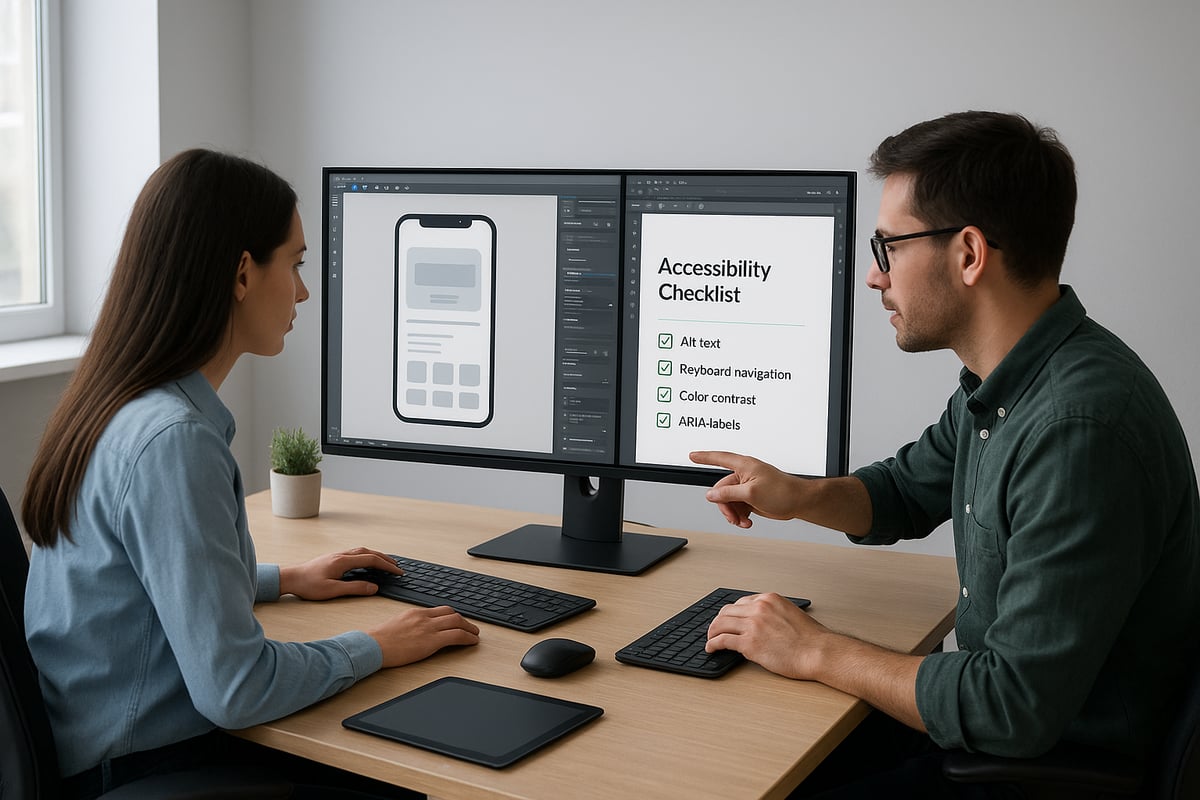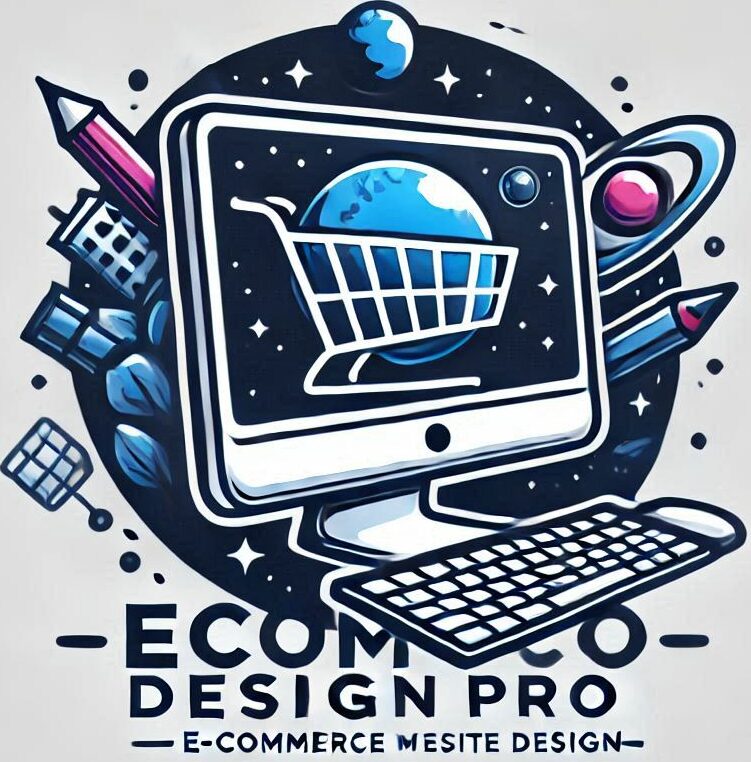In 2025, user expectations are evolving faster than ever, and digital design must keep pace. User experience graphic design is no longer just about making things look appealing; it is about crafting seamless, intuitive, and impactful digital journeys.
This guide unpacks the key trends and proven best practices shaping the future of user experience graphic design. You will discover how design choices influence engagement, drive business results, and create memorable experiences.
Ready to elevate your design strategy? Explore actionable insights, real-world examples, and expert recommendations to stay ahead in an ever-changing digital landscape.
The Evolving Role of Graphic Design in User Experience
In today’s digital landscape, the relationship between user experience graphic design and business success is undeniable. The boundaries between visual creativity and usability have blurred, creating a new standard for how brands engage with their audiences.

Understanding the Intersection of UX and Graphic Design
User experience graphic design brings together the principles of user-centric thinking and visual communication to shape digital products that are both beautiful and functional. UX focuses on how users interact with a product, while graphic design emphasizes visual storytelling and brand identity. Today, these disciplines overlap, with designers relying on user research to create solutions that go beyond aesthetics.
For example, many branding projects now begin with deep user research to uncover real needs before any visuals are produced. This approach shows how design choices influence user emotions and behaviors at every touchpoint. As explored in Graphic Design and User Experience, successful brands understand that visual appeal alone is not enough; the user’s journey must feel intuitive and meaningful.
Why User Experience Matters in Graphic Design
Design that prioritizes user experience graphic design leads to measurable business outcomes. Companies that invest in UX-driven design often see engagement, conversions, and loyalty soar. In fact, industry data reveals that businesses focusing on UX can achieve up to 400 percent higher conversion rates compared to those that do not.
Usability, accessibility, and inclusivity are now core requirements. When interfaces are confusing or fail to meet user needs, frustration rises and brand trust erodes. A poorly designed checkout process, for instance, can quickly drive customers away. By centering graphic design on user experience, brands protect their reputation and foster lasting relationships.
The Designer’s Mindset: From Art to Solutions
The mindset behind user experience graphic design has shifted from pure artistic expression to purposeful problem-solving. While art seeks to evoke emotion, design aims to deliver utility and meet specific business goals. This means designers must go beyond intuition, using research, empathy, and iterative testing to guide their choices.
One effective strategy is journey mapping, which visualizes the user’s path and highlights pain points. By identifying obstacles and opportunities, designers can create solutions that improve satisfaction and performance. Ultimately, the best user experience graphic design is grounded in evidence and adapts to real user needs.
Case Study: UX-Driven Rebranding Success
Consider a brand that embraced user experience graphic design to transform its public image. After gathering extensive user feedback, the company redesigned its website for clarity, speed, and accessibility. This overhaul led to higher usability scores, increased customer satisfaction, and stronger brand loyalty.
The key lesson? Continuous optimization and listening to users are essential. Incorporating feedback at each stage ensures the design remains relevant and effective. As a result, user experience graphic design becomes a strategic asset that drives ongoing business growth and customer trust.
Key Trends in User Experience Graphic Design for 2025
Staying ahead in user experience graphic design means understanding and adapting to the latest industry shifts. In 2025, several transformative trends are shaping how designers create impactful digital experiences.

AI-Powered Personalization and Automation
Artificial intelligence is redefining user experience graphic design by introducing dynamic personalization and automation. AI tools now analyze user behavior, adapting layouts, content, and recommendations in real time.
For example, e-commerce platforms use AI-driven suggestions to tailor product displays, making each user journey more relevant. This approach not only increases engagement but also streamlines the browsing experience.
Designers leveraging AI can deliver intuitive, responsive interfaces that anticipate user needs. As AI evolves, expect even deeper integration into the user experience graphic design process.
Minimalism and Clarity in Visual Hierarchy
Minimalist design continues to dominate user experience graphic design in 2025. Clean interfaces, generous whitespace, and bold typography help users focus on what matters most.
Simplified navigation and well-structured layouts reduce cognitive load, allowing users to complete tasks efficiently. Data shows that minimalist designs can significantly increase task completion rates and overall satisfaction.
To achieve clarity, designers prioritize visual hierarchy, ensuring important elements stand out. The result is a seamless, distraction-free user experience graphic design that resonates with modern audiences.
Inclusive and Accessible Design as Standard
Accessibility is now a core standard in user experience graphic design. Guidelines like WCAG 2.2 ensure digital products are usable by everyone, regardless of ability.
Key practices include maintaining high color contrast, providing descriptive alt text, and enabling keyboard navigation. Major brands have faced legal challenges due to inaccessible design, emphasizing the importance of inclusivity.
By embedding accessibility from the outset, designers create user experience graphic design solutions that reach wider audiences and support brand reputation.
Motion, Microinteractions, and Immersive Visuals
Subtle animations and microinteractions are elevating user experience graphic design, making interfaces more engaging and intuitive. Motion guides user attention, offers feedback, and communicates system status.
For instance, animated buttons can boost click-through rates by providing immediate visual confirmation. To explore how motion enhances engagement, see Micro-Animations on User Engagement.
Incorporating motion thoughtfully in user experience graphic design not only delights users but also improves usability and retention.
Sustainable and Eco-Friendly Design Practices
Sustainability is becoming a priority in user experience graphic design. Designers are optimizing images, minimizing code, and choosing eco-friendly color palettes to reduce energy consumption.
Research suggests that sustainable web practices can lower carbon emissions by up to 30 percent. Energy-efficient hosting and performance optimization further support environmental goals.
Integrating sustainability into user experience graphic design aligns with growing consumer expectations for responsible digital experiences.
Cultural and Hyper-Local Design Adaptation
Global audiences demand culturally relevant user experience graphic design. In 2025, brands are customizing visuals and language for local markets, ensuring content resonates with diverse users.
This involves conducting cultural research, adapting imagery, and considering regional preferences. For example, brands localize their websites with region-specific graphics and tailored messaging.
Such hyper-local adaptation in user experience graphic design builds trust, fosters connection, and drives engagement across global markets.
Best Practices for User Experience Graphic Design in 2025
Staying ahead in user experience graphic design requires a blend of research, adaptability, and a commitment to user-centric solutions. As digital landscapes evolve, following proven best practices ensures your designs are effective, accessible, and memorable.

User Research and Data-Driven Design Decisions
Effective user experience graphic design starts with understanding real user needs. Conducting surveys, interviews, and analyzing website analytics reveals valuable insights about user behavior.
For example, usability testing exposes friction points within digital interfaces. By using A/B testing, designers can compare layouts, colors, or content variations, leading to higher conversion rates. Prioritizing data-driven decisions means that every design choice is grounded in evidence, not assumptions. This approach builds a strong foundation for projects that truly resonate with users.
Designing for Mobile-First and Responsive Experiences
With over 60 percent of users browsing on mobile devices, user experience graphic design must prioritize mobile-first strategies. Responsive layouts, flexible grids, and scalable vector graphics create seamless experiences across devices.
Touch-friendly navigation and clear call-to-action buttons are essential for accessibility and usability. Optimizing content for smaller screens improves readability and reduces frustration. By embracing a mobile-first mindset, designers ensure that digital products remain relevant and competitive in a mobile-centric world.
Prioritizing Accessibility and Usability
Building inclusive products is non-negotiable for user experience graphic design in 2025. Accessibility standards demand semantic HTML, ARIA labels, and legible fonts. Clear color contrast and keyboard navigation make interfaces usable for everyone.
For practical guidance, explore Inclusive Design Principles for Accessibility, which outlines essential steps for accessible design. Improving accessibility not only expands your audience but also benefits SEO and brand reputation. A commitment to usability ensures every user enjoys a frictionless experience.
Visual Consistency and Brand Cohesion
Maintaining visual consistency strengthens brand identity and user trust. Design systems and style guides help unify elements like color palettes, typography, and imagery across platforms.
Consistent use of visual assets supports user experience graphic design by making interfaces predictable and easier to navigate. A cohesive visual language also increases brand recall, as users come to recognize and rely on familiar cues. Design systems enable efficient scaling as new features or products are added.
Fast Load Times and Performance Optimization
Speed is critical for user experience graphic design. Users expect fast-loading sites, and a single second of delay can reduce conversions by up to 7 percent.
Techniques such as image compression, lazy loading, and minimal scripts keep performance high. Optimizing assets and code ensures that digital products deliver smooth, uninterrupted experiences. Fast websites reduce bounce rates, improve user satisfaction, and boost SEO rankings.
| Optimization Method | Impact on UX |
|---|---|
| Image Compression | Faster load times |
| Lazy Loading | Smoother browsing |
| Minimal Scripts | Reduced delays |
Continuous Testing and Iterative Improvement
User experience graphic design thrives on ongoing feedback and adaptation. Regular usability tests, heatmap analysis, and analytics reviews identify areas for improvement.
Iterative design cycles—where updates are made in response to user input—lead to measurable gains in usability and satisfaction. Gathering feedback from real users ensures that refinements address actual needs, not just designer assumptions. This continuous process keeps your digital products fresh, relevant, and user-centric.
Step-by-Step Guide: Implementing a User Experience Graphic Design Project
Embarking on a user experience graphic design project requires a structured approach. Following a clear, step-by-step process ensures your digital products are both visually compelling and user-focused.

Step 1: Define User Goals and Business Objectives
Every successful user experience graphic design project starts by aligning user needs with organizational goals. Begin with stakeholder interviews to clarify business objectives and desired outcomes. Develop user personas to better understand your target audience’s motivations, pain points, and expectations.
Journey mapping is a powerful tool at this stage. It helps visualize the end-to-end user experience, uncovering potential friction points before design begins. For example, an e-commerce site aiming to reduce cart abandonment would map the entire checkout journey.
Clear alignment at this stage ensures the user experience graphic design process has a strong foundation. Referencing guides like Mastering User Experience Design can help you set the right strategic direction.
Step 2: Conduct Comprehensive User Research
In-depth research is essential to inform your user experience graphic design decisions. Use a mix of qualitative and quantitative methods, such as user surveys, interviews, competitor analysis, and usability studies.
Gather actionable insights by observing real users interacting with similar products. Identify pain points, preferences, and behavioral trends. For instance, user feedback might reveal confusion with navigation menus, highlighting opportunities for improvement.
This research-driven approach ensures your user experience graphic design solutions are grounded in actual user needs, not assumptions. The result is a design direction that resonates and performs.
Step 3: Develop Wireframes and Visual Concepts
With research insights in hand, start sketching wireframes to outline information architecture and visual hierarchy. Collaboration between UX and graphic designers is crucial during this phase. Wireframes map out layout, navigation, and content placement before investing in detailed visuals.
Rapid prototyping allows for early validation. Share clickable prototypes with stakeholders and users to gather feedback. This iterative approach lets you refine concepts quickly and cost-effectively.
By focusing on structure first, your user experience graphic design project balances creativity with usability from the outset.
Step 4: Apply Design Systems and Accessibility Standards
Implementing a consistent design system streamlines the user experience graphic design process. Leverage established style guides and component libraries to maintain brand cohesion and visual consistency.
Accessibility is non-negotiable. Ensure color contrast, font sizing, and interactive elements meet WCAG 2.2 standards. Incorporate semantic HTML and ARIA labels for screen readers. Accessibility audits at this stage catch issues early, reducing costly rework.
For more on designing inclusively, consult Inclusive and Accessible Design. Prioritizing accessibility expands your audience and enhances user satisfaction.
Step 5: Test, Iterate, and Refine
Continuous testing is vital for optimizing user experience graphic design outcomes. Conduct usability tests with real users and stakeholders to identify friction points and areas for enhancement.
Utilize tools like A/B testing, heatmaps, and analytics to gather objective data. Incorporate feedback into successive design iterations, focusing on incremental improvements. This cycle of testing and refinement leads to measurable gains in engagement and satisfaction.
Embrace an iterative mindset to ensure your user experience graphic design evolves in line with user expectations and business goals.
Step 6: Launch and Monitor Performance
Before launch, conduct thorough checks for responsiveness, load speed, and accessibility. A seamless rollout minimizes disruptions and maximizes positive first impressions.
Post-launch, monitor user behavior using analytics dashboards. Track engagement, conversion metrics, and performance indicators. Use this data to identify further optimization opportunities.
A commitment to ongoing monitoring and refinement is the hallmark of effective user experience graphic design. This approach ensures your digital product remains relevant, intuitive, and impactful.
Future-Proofing Your UX Graphic Design Strategy
Future-proofing your user experience graphic design strategy is essential as digital landscapes shift rapidly. By staying ahead of trends, embracing new tools, and prioritizing the user, you can ensure your designs remain impactful and relevant.
Embracing Emerging Technologies (AI, AR/VR, Voice UI)
Adopting the latest technologies is critical for any user experience graphic design strategy in 2025. Artificial intelligence now powers smarter design workflows, enabling rapid prototyping, dynamic personalization, and predictive user interactions.
Designers are leveraging AI for content generation, layout adaptation, and accessibility improvements. For example, AI in the Design Process enhances efficiency and creativity, allowing teams to focus on more strategic, user-centric tasks.
Augmented reality and voice interfaces are also transforming how users engage with digital products. Retailers use AR for immersive product previews, while voice UI enables hands-free navigation, expanding accessibility and inclusivity.
Building for Scalability and Flexibility
A robust user experience graphic design approach must account for future growth and change. Modular design systems allow organizations to quickly adapt layouts, features, and content for evolving business needs.
By anticipating future requirements, teams can create scalable solutions that support new devices, languages, and user scenarios. Scalable e-commerce platforms, for instance, can easily accommodate seasonal campaigns or sudden traffic spikes without sacrificing quality.
Flexible frameworks and reusable components make it easier to iterate and refine designs. This ensures your user experience graphic design remains competitive and efficient as digital demands expand.
Cultivating a User-Centric Design Culture
Embedding a user-centric mindset across your organization is key to long-term success in user experience graphic design. This begins with training teams to value empathy, research, and iterative improvement.
Cross-functional collaboration between designers, developers, and marketers ensures every touchpoint is aligned with user needs and business objectives. Organizations with a strong UX culture consistently outperform competitors, as they deliver more intuitive, delightful experiences.
Encouraging open feedback loops and promoting shared ownership of the design process leads to higher engagement and satisfaction for both users and teams.
Measuring Success: UX Metrics and KPIs
Tracking and analyzing key performance indicators is essential for optimizing user experience graphic design. Metrics such as Net Promoter Score (NPS), Customer Satisfaction (CSAT), and task success rates provide actionable insights into user perceptions and behaviors.
A well-structured table helps summarize essential metrics:
| Metric | What It Measures | Why It Matters |
|---|---|---|
| NPS | User loyalty | Identifies brand advocates |
| CSAT | User satisfaction | Pinpoints satisfaction drivers |
| Task Success | Completion efficiency | Reveals usability improvements |
| Time on Task | Interaction speed | Highlights process bottlenecks |
Regularly reviewing these KPIs guides continuous improvement and validates the impact of your user experience graphic design efforts.
Staying Ahead with Continuous Learning and Trend Analysis
The digital design landscape evolves rapidly, requiring ongoing education and adaptation. Teams should follow industry leaders, attend conferences, and participate in peer learning to stay informed about new standards and technologies.
Regularly updating processes ensures your user experience graphic design remains current, especially as accessibility regulations and user expectations shift. Adapting swiftly to these changes positions your organization as an industry leader.
Proactive trend analysis helps you anticipate shifts in user behavior, enabling you to deliver relevant and engaging experiences ahead of the competition.
Expert Insights: Quotes and Advice from Leading Designers
Learning from thought leaders can provide practical inspiration for advancing your user experience graphic design strategy. Top designers emphasize the importance of user research, iterative testing, and cross-disciplinary collaboration.
One leading expert notes, “Great design is not about decoration, but about solving real problems for real people.” Another advises, “Continuous feedback is the heartbeat of successful digital products.”
By embracing these lessons, you can push boundaries and achieve measurable results in user experience graphic design.



